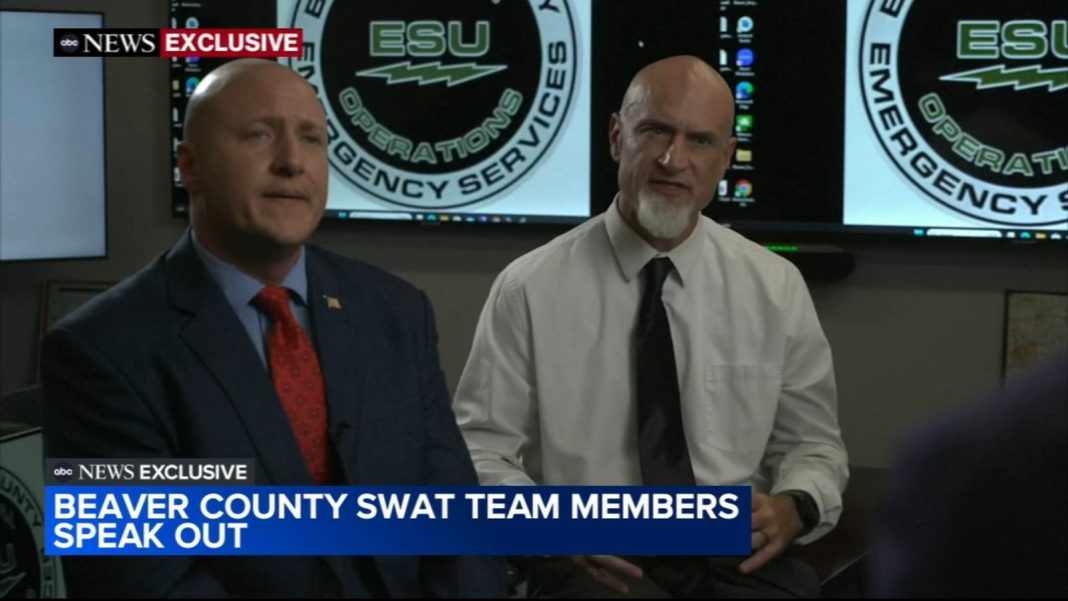Title: The Lapses in Communication and Coordination during Trump’s Assassination Attempt
Introduction:
The attempted assassination of former President Donald Trump on July 13, 2024, shed light on critical planning and communication failures. The local SWAT team assigned to protect Trump revealed that they had no contact with the Secret Service agents responsible for security. This lack of coordination ultimately allowed the would-be assassin to open fire, resulting in casualties and Trump’s injury. In this article, we delve into the details of the incident, examining the consequences of the communication breakdown and the subsequent investigations.
The SWAT Team’s Unmet Expectations:
The local SWAT team assigned to protect Trump expected a face-to-face briefing with the Secret Service agents upon their arrival but never received one. Jason Woods, the lead sharpshooter on the SWAT team, noted that this lack of communication was concerning and possibly pivotal in the events that unfolded. Without any contact with the Secret Service, the SWAT team felt ill-prepared to handle the situation effectively.
Lack of Communication and Coordination:
In their first public comments since the assassination attempt, the SWAT team and their supervisors revealed the absence of communication and coordination between the on-site personnel. They expressed their frustration at the inability to thwart the attack and described the weight of the failure they now carry. This anecdotal evidence highlights the significance of effective communication and coordination in such high-stakes situations.
Resignation of Secret Service Director and Ongoing Investigations:
Following the assassination attempt, Secret Service Director Kimberly Cheatle resigned, indicating the gravity of the incident. Internal and congressional investigations have been launched, with a specific focus on communications and coordination failures. These investigations aim to prevent similar occurrences in the future and ensure the security of public figures.
The Secret Service’s Responsibility:
While the local, county, and state law enforcement agencies were present to support the on-site Secret Service team, the ultimate responsibility for security lay with the Secret Service. The agency’s spokesman, Anthony Guglielmi, acknowledged the need to understand the events leading up to the assassination attempt and pledged full cooperation with relevant investigations.
Insufficient Coordination with the Ground Team:
The SWAT team members expressed their expectation of better coordination and communication with the Secret Service. They believed that a more collaborative approach between the on-site team and Trump’s detail could have prevented the attack. Regrettably, the first communication between the two groups occurred only after the shooting had taken place.
Critical Moments and Missed Opportunities:
The Beaver County sniper team, responsible for protecting Trump, had identified the gunman, Thomas Matthew Crooks, as suspicious. They had even taken photographs and reported his presence to their command. However, Crooks managed to evade law enforcement and position himself on the roof of a building where the snipers were stationed. These missed opportunities underscore the need for seamless coordination and swift action in preventing such incidents.
The Importance of Collaboration:
Beaver County Chief Detective Patrick Young, who oversees the Emergency Services Unit and SWAT team, emphasized the crucial role of collaboration during life-threatening situations. He commended the efforts of the SWAT team and highlighted the significance of unity and teamwork in achieving success.
Conclusion:
The attempted assassination of President Donald Trump revealed significant lapses in communication and coordination between the local SWAT team and the Secret Service. The absence of a face-to-face briefing and limited communication channels hindered the effectiveness of the response. As investigations continue, it is imperative to address these failures to ensure the safety of public figures in the future. Collaboration and seamless coordination remain vital in preventing similar incidents and protecting national leaders.


